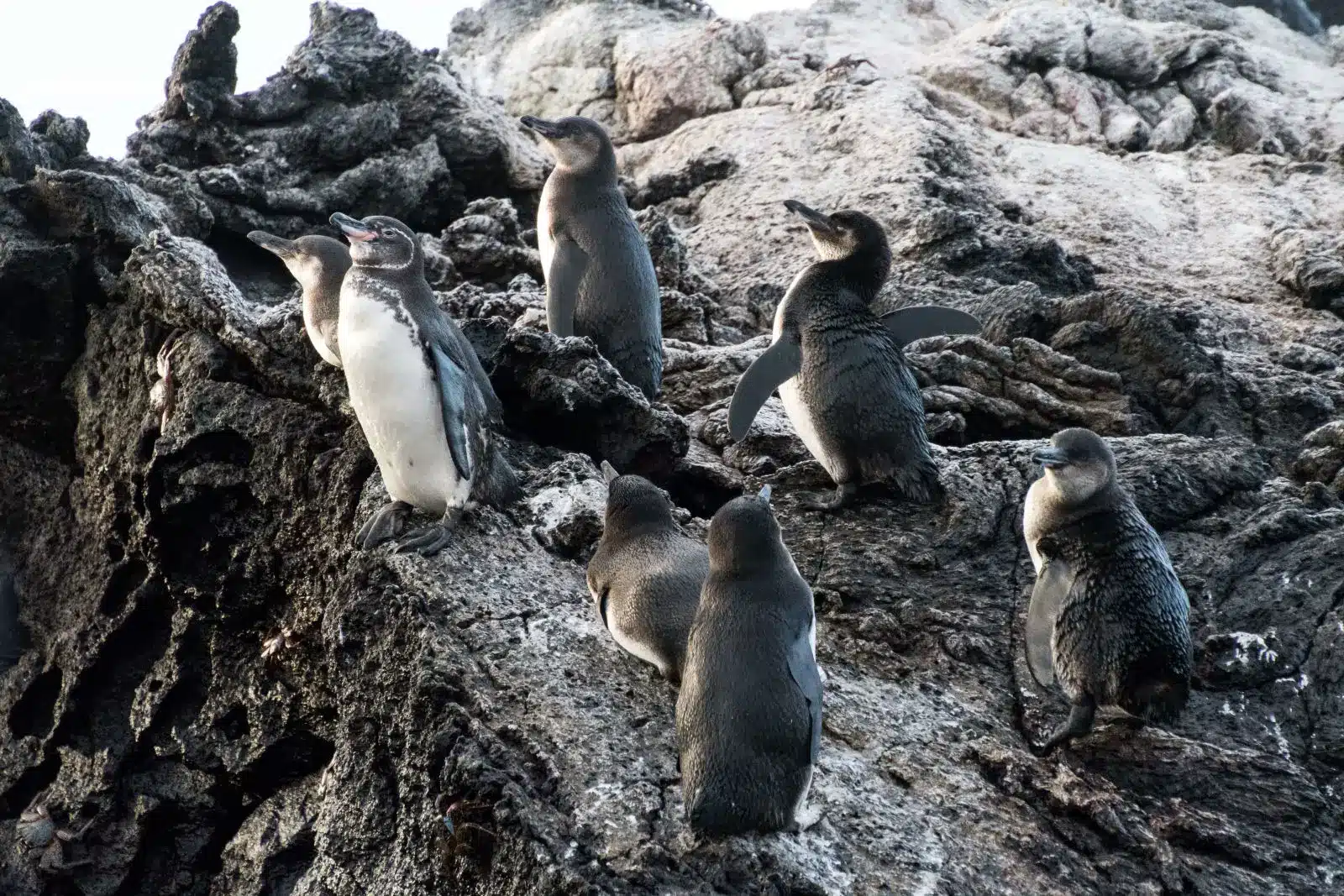Key Takeaways
-
The Canon XF705 is a versatile camcorder perfect for capturing the intricacies of wildlife in stunning 4K resolution.
-
Proper gear, including additional lenses and support equipment, is crucial for the unpredictability of outdoor shooting.
-
Storytelling techniques can engage viewers and inspire conservation efforts, following the example of Sir David Attenborough.
-
Documenting endangered species requires careful planning, ethical practices, and technical know-how.
-
Wildlife documentaries have the power to influence public opinion and policy, driving real-world conservation outcomes.

“Sir David Attenborough and HRH …” from www.flickr.com and used with no modifications.
Capturing Nature’s Wonders: Canon XF705’s Role in Wildlife Documentaries
When it comes to wildlife documentaries, the power of storytelling cannot be overstated. The lens through which we view the natural world can shape our understanding and inspire action to protect it. The Canon XF705 plays a pivotal role in this narrative, offering filmmakers a tool that captures the raw beauty of nature with clarity and precision.
Imagine the lush foliage of a rainforest, the subtle movements of a rare species, and the interplay of light and shadow in a bird’s plumage—all brought to life in vivid detail. This is the promise of the Canon XF705, a camcorder that’s not just about technology but also about the stories it enables us to tell.
Why the Canon XF705 is Ideal for Wildlife Filmmaking
Wildlife filmmaking is a demanding art that requires equipment capable of keeping up with the challenges of the natural environment. The Canon XF705 stands out for several reasons:
-
Its 4K UHD resolution ensures that every frame is bursting with detail, which is essential when showcasing the intricacies of wildlife and their habitats.
-
The camcorder’s 1-inch CMOS sensor offers excellent performance in low-light conditions, allowing filmmakers to capture the magic of dawn and dusk—when many animals are most active.
-
With its impressive 15x optical zoom, videographers can get up close to subjects while maintaining a respectful and safe distance, preserving the natural behavior of wildlife.
Moreover, the XF705’s Dual Pixel CMOS AF provides fast and accurate autofocus, which is crucial when dealing with unpredictable subjects that won’t wait for a second take. And for those extended shoots in the wild, the dual SD card slots and efficient battery life are a godsend, ensuring that you never miss a moment.
Essential Gear Checklist for Outdoor Shooting
Before venturing out into the wild, it’s essential to prepare a kit that will support your filmmaking journey. Here’s a quick checklist to ensure you’re ready:
-
Canon XF705 camcorder with extra batteries and memory cards
-
Sturdy tripod with a fluid head for smooth panning and tilting
-
Weatherproof camera bag to protect your gear from the elements
-
Additional lenses, such as a wide-angle or macro, for diverse shot compositions
-
Portable LED lights with diffusers for subtle fill light when necessary
-
High-quality headphones for monitoring audio in noisy environments
-
External microphone options, like a shotgun mic for directional audio and a lavalier for interviews
Remember, the key to successful wildlife filmmaking is to be as unobtrusive as possible. Your gear should enable you to capture the beauty of nature without disturbing it.
Setting the Scene: Location Scouting and Preparation
Embarking on a wildlife documentary is an adventure that begins long before the camera starts rolling. Location scouting is paramount. It’s about finding those breathtaking vistas and the hidden corners where wildlife thrives. You’ll need to research the habits of the species you’re documenting, understand the best times for filming, and obtain the necessary permits for access to protected areas.
Preparation also involves understanding the local climate and terrain. Will you be filming in a rainforest with high humidity or a desert with extreme temperature fluctuations? This knowledge will inform not only your packing list but also your shooting schedule. Ensure you have maps, local guides if necessary, and a clear plan for each day’s shoot. The goal is to be ready to capture the golden moments when they arise.
Technical Tips for Filming in the Wild
Once you’re on location, technical prowess is key. The Canon XF705 offers features that are especially useful in the wild. Its Wide DR Gamma provides a wider dynamic range, which means you can capture more detail in both the shadows and highlights—crucial for filming in the varying light conditions of outdoor environments.
Here are some technical tips to help you make the most of your Canon XF705 in the wild:
-
Use manual focus when tracking animals to maintain control, as autofocus can sometimes be thrown off by moving elements like foliage.
-
Take advantage of the variable frame rates for slow-motion shots that can reveal behaviors or movements not visible at normal speed.
-
Regularly calibrate your white balance to the changing light conditions to keep colors true to life.
-
Don’t shy away from using the built-in ND filters to manage exposure, especially in bright, direct sunlight.
-
Record in Canon Log 3 to preserve maximum detail and give yourself more flexibility in post-production.
The Ripple Effect: How Wildlife Documentaries Can Drive Conservation
Wildlife documentaries do more than entertain; they have the power to sway hearts and minds towards conservation. They bring the audience face-to-face with the wonders and challenges of the natural world, often sparking a desire to protect it. It’s a ripple effect that starts with awareness and can lead to significant change.
Consider the impact of the documentary ‘The Ivory Game’. It exposed the brutal reality of elephant poaching, leading to a public outcry and significant policy changes in countries like China, where a ban on ivory trade was implemented. This is the power of visual storytelling: it can turn awareness into action.
But it’s not just about the big, headline-grabbing changes. Every time a viewer is moved to join a local conservation group, make a donation, or simply refuse single-use plastics, the documentary has made an impact. The Canon XF705 is an ally in this mission, capturing the imagery that fuels these transformations.
Case Studies of Successful Conservation Campaigns
Successful conservation campaigns often start with a story that touches people deeply. For example, the documentary ‘Chasing Ice’ used time-lapse cameras to capture the disappearing glaciers, providing visual evidence of climate change. This stunning imagery prompted discussions and increased environmental activism.
-
‘Blackfish’ led to a reevaluation of orca captivity and entertainment, influencing the policies of marine parks.
-
‘Virunga’ spotlighted the plight of the last mountain gorillas and the brave efforts to protect them, resulting in increased support for the park and its rangers.
-
‘The Cove’ exposed the dolphin hunting practices in Taiji, Japan, leading to international pressure and a reduction in the number of dolphins captured.
Each of these documentaries used compelling narratives and visuals to drive their message home, demonstrating the profound effect that well-crafted documentaries can have on conservation efforts.
Measuring the Impact: From Viewer Empathy to Action
The true measure of a wildlife documentary’s success is its ability to convert viewer empathy into conservation action. It’s not just about the number of views or awards but the tangible changes it inspires. How do we gauge this impact? By looking at the actions taken by viewers after they watch. Did they sign a petition, donate to a cause, or change their consumer habits? These are the metrics that matter.
Gearing Up to Make a Difference
Once your documentary is complete, the journey doesn’t end there. It’s time to gear up for the next phase: outreach and education. This is where you take your film beyond the screen and into the world, where it can start making a real difference.
Next Steps After Film Wrap-Up: Outreach and Education
-
Host screenings at schools, community centers, and conservation events to educate and inspire direct action.
-
Develop educational materials that can be used in conjunction with your documentary to deepen the learning experience.
-
Create a website or social media campaign to keep the conversation going and provide resources for viewers who want to help.
-
Engage with the media to get coverage for your documentary and the issues it addresses.
-
Partner with organizations that can help amplify your message and provide avenues for viewers to get involved.
Remember, your film is a tool for change. Use it to its fullest potential by actively promoting it and the conservation messages it carries.

“Galápagos Penguin – Facts, Diet …” from animalia.bio and used with no modifications.
Partnering with Conservation Organizations
Partnerships with conservation organizations can amplify the impact of your documentary. These organizations often have the infrastructure to turn the awareness raised by your film into concrete action. They can provide expertise, resources, and networks that can help your film reach a wider audience and make a bigger splash in the conservation world.
When selecting organizations to partner with, look for those that align with the goals of your documentary and have a track record of effective conservation work. Together, you can create a powerful force for change.
FAQs
Q: What Makes Canon XF705 Suitable for Wildlife Documentaries?
A: The Canon XF705 is ideal for wildlife documentaries because of its 4K UHD resolution, excellent low-light performance, powerful zoom capabilities, and robust autofocus system—all crucial for capturing the nuances of wildlife in their natural habitats.
Q: How Can Storytelling in Documentaries Lead to Conservation Action?
A: Effective storytelling in documentaries can create emotional connections with viewers, educate them about conservation issues, and inspire them to take action, whether that’s through advocacy, donations, or personal lifestyle changes. For instance, Attenborough-style documentaries have been influential in raising awareness and driving conservation efforts.
Q: What Are Some Challenges of Filming Endangered Species?
A: Challenges include ensuring minimal disturbance to the animals, dealing with difficult and often unpredictable environments, and the ethical considerations of portraying the species and their struggles accurately and sensitively.
Q: Can Wildlife Documentaries Truly Influence Environmental Policies?
A: Yes, wildlife documentaries can and have influenced environmental policies by raising public awareness, shifting perceptions, and putting pressure on policymakers to enact changes that benefit conservation efforts.
Q: How to Get Involved in Conservation Efforts Post-Viewing?
A: After watching a wildlife documentary, you can get involved by supporting conservation organizations, participating in local conservation initiatives, educating others about the issues, and making lifestyle changes that reduce your environmental impact.




